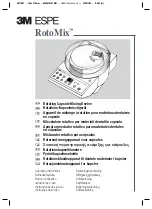
1-2
The receiver receives signals within the range in use at the first sounding, and it receives
signals between 0 and 20 meters at the second and third soundings in both upward and
downward directions. Generally, the blind zone occurs in short range due to the beam
shape and rare transmission rate. The high transmission rate can reduce the blind zone
and increase the number of reflection from the target.
Refer to the figure below.
Fig. 1.3 Sounding Area (Standard versus High)
The received signals obtained by these three soundings are processed as follows in the
transmitter unit.
a) 0 - 20m:The received echoes obtained from the three soundings are compared and
the strongest echo is picked up and sent to the display unit.
b) more than 20m: The received echoes obtained from the first sounding are sent to the
display unit.
1.3 DATA FORMAT FROM TRANSMITTER UNIT
The data sent from the transmitter unit to the paravane receiver consist of upward and
downward sounding signals, sync code, temperature and depth data, and catch sensor
data (option). Transmission sequence of these signals are shown in Fig. 1.4.
Fig. 1.4 Data Format
There are two SYNC codes, DN SYNC and UP SYNC, and (2) depth data is divided into
two parts, MSB and LSB.
Detects target one time
Detects target three times
Summary of Contents for CN-24
Page 1: ...COLOR NET RECORDER CN 24 ...
Page 9: ...1 5 Fig 1 8 Transmitter unit timing chart range 80 80 m and sounding rate high ...
Page 11: ...2 2 Fig 2 1 Block Diagram of Transmitter Unit ...
Page 20: ...2 11 Fig 2 16 Block Diagram of Display Unit ...
Page 64: ......
Page 65: ......
Page 66: ......
Page 67: ......
Page 68: ......
Page 69: ......
Page 70: ......
Page 71: ......
Page 72: ......
Page 73: ......
Page 74: ......
Page 75: ......
Page 76: ......
Page 77: ......
Page 78: ......
Page 79: ......
Page 80: ......
Page 81: ......
Page 82: ......
Page 83: ......
Page 84: ......
Page 85: ......
Page 86: ......
Page 87: ......
Page 88: ......
Page 89: ......
Page 90: ......







































